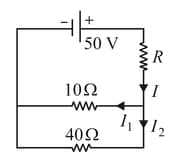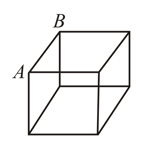Umakant Kondapure, Collin Fernandes, Nipun Bhatia, Vikram Bathula and, Ketki Deshpande Solutions for Chapter: Current Electricity, Exercise 3: Competitive Thinking
Umakant Kondapure Physics Solutions for Exercise - Umakant Kondapure, Collin Fernandes, Nipun Bhatia, Vikram Bathula and, Ketki Deshpande Solutions for Chapter: Current Electricity, Exercise 3: Competitive Thinking
Attempt the practice questions on Chapter 7: Current Electricity, Exercise 3: Competitive Thinking with hints and solutions to strengthen your understanding. MHT-CET TRIUMPH Physics Multiple Choice Questions Part - 2 Based on Std. XI & XII Syllabus of MHT-CET solutions are prepared by Experienced Embibe Experts.
Questions from Umakant Kondapure, Collin Fernandes, Nipun Bhatia, Vikram Bathula and, Ketki Deshpande Solutions for Chapter: Current Electricity, Exercise 3: Competitive Thinking with Hints & Solutions
In a potentiometer experiment of a cell of . $1.25 \mathrm{V}$ gives balancing length of $30 \mathrm{cm}$. If the cell is replaced by another cell, balancing length is found to be $40 \mathrm{cm}$. What is the emf of second cell?
In above circuit if current through resistors is , value of is

The effective resistance between and in the figure is if each side of the cube has resistance. The effective resistance between the same two points, when the link is removed, is

Two batteries with e.m.f. and are connected in parallel across a load resistor of The internal resistances of the two batteries are and respectively. The voltage across the load lies between:
Assertion: In a metre bridge experiment, null point for an unknown resistance is measured. Now the unknown resistance is placed inside an enclosure maintained at a higher temperature. The null point can be obtained at the same point as before by decreasing the value of the standard resistance.
Reason: Resistance of a metal increases with increase in temperature.
A metre bridge is set up as shown, to determine an unknown resistance using a standard resistor. The galvanometer shows null point when the tapping key is at mark. The end-corrections are and respectively for the ends and . The determined value of is

, and are voltmeters of resistance , and respectively as shown in the figure. When some potential difference is applied between and , the voltmeter readings are , and respectively, then

Consider the circuit shown in the figure where all the resistances are of magnitude . If the current in the extreme right resistance is the potential difference between and is

